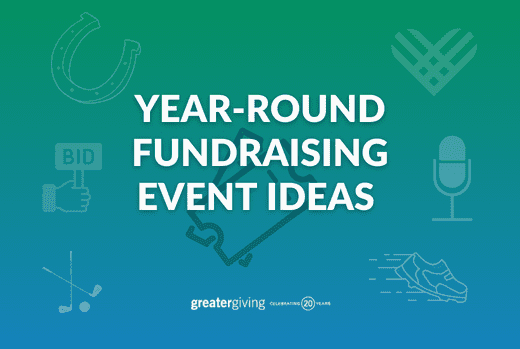Comprehending the Crucial Components of Nonprofit Fundraising: Secret Practices for Enhancing Monetary Sustainability
Nonprofit fundraising is a complex venture that requires a nuanced understanding of numerous crucial elements to guarantee economic sustainability. From calculated planning that straightens with mission-driven goals to the farming of significant benefactor connections, each element plays a critical function in the overall success of fundraising initiatives.
Strategic Fundraising Planning
Strategic fundraising planning is an important component for any kind of nonprofit company aiming to accomplish its mission successfully. This process includes establishing clear, measurable objectives that straighten with the organization's total objectives while thinking about the unique requirements of the area it serves. A well-structured fundraising strategy not just identifies prospective revenue sources yet also describes the approaches and strategies required to involve those sources.

Additionally, leveraging information analytics can notify decision-making by supplying insights right into contributor habits and patterns, allowing nonprofits to tailor their fundraising methods accordingly. Regular testimonials and updates of the fundraising strategy are essential to react to changing circumstances and arising chances. Ultimately, a thorough calculated fundraising plan functions as a roadmap for nonprofits, fostering economic stability and allowing them to meet their mission properly.
Building Contributor Relationships
Structure strong contributor relationships is necessary for the long-term sustainability of any type of not-for-profit company. These relationships are the structure upon which effective fundraising initiatives are developed, as they cultivate trust, loyalty, and involvement amongst supporters. Nonprofits need to focus on growing meaningful connections with their contributors, identifying that each communication can substantially influence their willingness to contribute.
To effectively build contributor partnerships, companies need to focus on customized interaction strategies. This involves understanding the rate of interests, inspirations, and offering patterns of specific donors, enabling tailored communication that resonates with them. Normal updates on business progression, program end results, and the impact of contributions reinforce the worth of their assistance.
In addition, sharing thankfulness is important. Acknowledging contributions immediately and regards not just boosts partnerships however likewise motivates ongoing support. Occasions such as benefactor recognition events give chances for personal links and area structure.
Eventually, nurturing contributor connections goes beyond transactional interactions; it embodies a collaboration where donors feel valued and essential to the goal. By spending time and sources in relationship-building, nonprofits can enhance benefactor retention, increase lifetime giving, and make certain monetary security for their campaigns.
Effective Interaction Approaches
Efficient communication strategies play a crucial function in reinforcing the solid contributor relationships that nonprofits make every effort to cultivate. Constant and clear messaging is important for sharing the objective, vision, and influence of the organization. Expressing the distinct worth recommendation helps check these guys out contributors comprehend just how their contributions make a substantial distinction.
Making use of several interaction channels-- such as e-mails, social media sites, newsletters, and in-person occasions-- ensures that messages get to a varied audience - nonprofit agency. Tailoring communication to various donor more tips here sections can boost engagement; for example, significant donors might value detailed records on funding allowances, while smaller sized donors may favor concise updates highlighting essential success
Narration is another powerful device in not-for-profit interaction. Sharing compelling narratives regarding recipients can stimulate psychological responses and promote a much deeper link with the reason. Transparency regarding financials and program results develops trust fund, encouraging donors to stay engaged gradually.
Involving the Area
Area involvement is essential for nonprofits seeking to amplify their impact and foster a sense of ownership among regional stakeholders. Establishing a robust connection with the neighborhood not only improves exposure however likewise develops count on, important for lasting fundraising efforts. By actively including community members in decision-making processes, nonprofits can align their goals with the demands and desires of the populace they offer.
To successfully engage the neighborhood, nonprofits need to Learn More Here prioritize openness and open interaction. Hosting public online forums, workshops, and informational sessions allows for meaningful discussion, where stakeholders can articulate their opinions and add to the organization's vision. Additionally, working together with local businesses, colleges, and public organizations can create collaborating collaborations that take advantage of shared resources for better effect.
Another essential facet of neighborhood interaction is recognizing and commemorating regional contributions. Recognizing benefactors, volunteers, and advocates promotes a feeling of belonging and loyalty, urging continued participation. Furthermore, showcasing success tales and the concrete advantages of neighborhood assistance can inspire others to add.
Eventually, proactive neighborhood interaction grows a network of advocates that are invested in the not-for-profit's mission, making sure lasting assistance and enhanced monetary sustainability.
Making Use Of Technology and Devices

One essential tool for nonprofits is a thorough benefactor monitoring system. These systems make it possible for companies to preserve in-depth documents of benefactor contributions, interactions, and choices, promoting tailored interaction and interaction (nonprofit agency). Additionally, utilizing on-line fundraising systems enables nonprofits to reach a more comprehensive target market, making it much easier for advocates to contribute through numerous networks, consisting of social networks and email projects
Furthermore, the use of task administration devices can aid enhance internal processes, ensuring that fundraising groups continue to be organized and concentrated on their objectives. Automation software program can also simplify repeated tasks, such as sending thank-you emails or pointers, liberating team time for even more calculated initiatives.
Final Thought
In verdict, the important elements of not-for-profit fundraising encompass tactical planning, solid benefactor partnerships, effective communication, neighborhood interaction, and the application of technology. These elements collectively contribute to improving monetary sustainability and durability within not-for-profit companies.
In addition, leveraging information analytics can educate decision-making by providing insights into donor behavior and trends, allowing nonprofits to tailor their fundraising techniques accordingly.Building strong donor relationships is important for the long-term sustainability of any nonprofit organization.Effective communication strategies play a pivotal duty in enhancing the solid benefactor connections that nonprofits aim to cultivate.One essential tool for nonprofits is a detailed contributor administration system.In conclusion, the important components of not-for-profit fundraising include calculated planning, strong benefactor connections, efficient communication, area involvement, and the application of innovation.